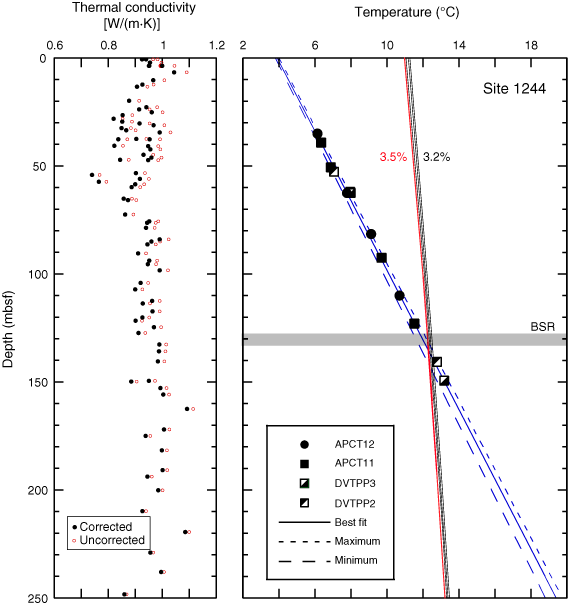
Figure F5. Thermal conductivity measured by the Davis-Villinger Temperature-Pressure Probe (DVTPP) and Advance Piston Corer Temperature (APCT) tools on recovered cores (Shipboard Scientific Party, 2003c) and To plotted vs. depth at Site 1244. Each small symbol represents the average of three needle probe measurements. Open circles = thermal conductivity at ambient pressure and temperature in the laboratory; solid circles = data corrected to in situ conditions. All in situ temperature estimates have been corrected using the empirically determined calibration constants given in Table T1. This site was important for determining these constants because of the large number of measurements made and the variety of tools used. Note that both DVTPP tools, which cannot be easily submerged in a water bath on the ship, were co-located with APCT tools at this site. Overlain on the data is the best-fit linear thermal gradient with uncertainties determined from the standard errors of the solution (Table T2). Also shown are curves showing the stability boundary between methane hydrate and free methane gas for pore water with seawater salinity (3.5%) and the measured salinity at the bottom-simulating reflection (BSR) at this site (3.2%) at hydrostatic pressure. Bounds for each pore water composition show the effect of an uncertainty of ±5 m in water depth. The depth of the BSR is shown with an uncertainty of ±2 m based on the results from the vertical seismic profile at this site (Tréhu et al., this volume).


![]()